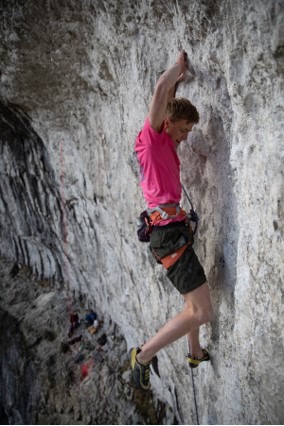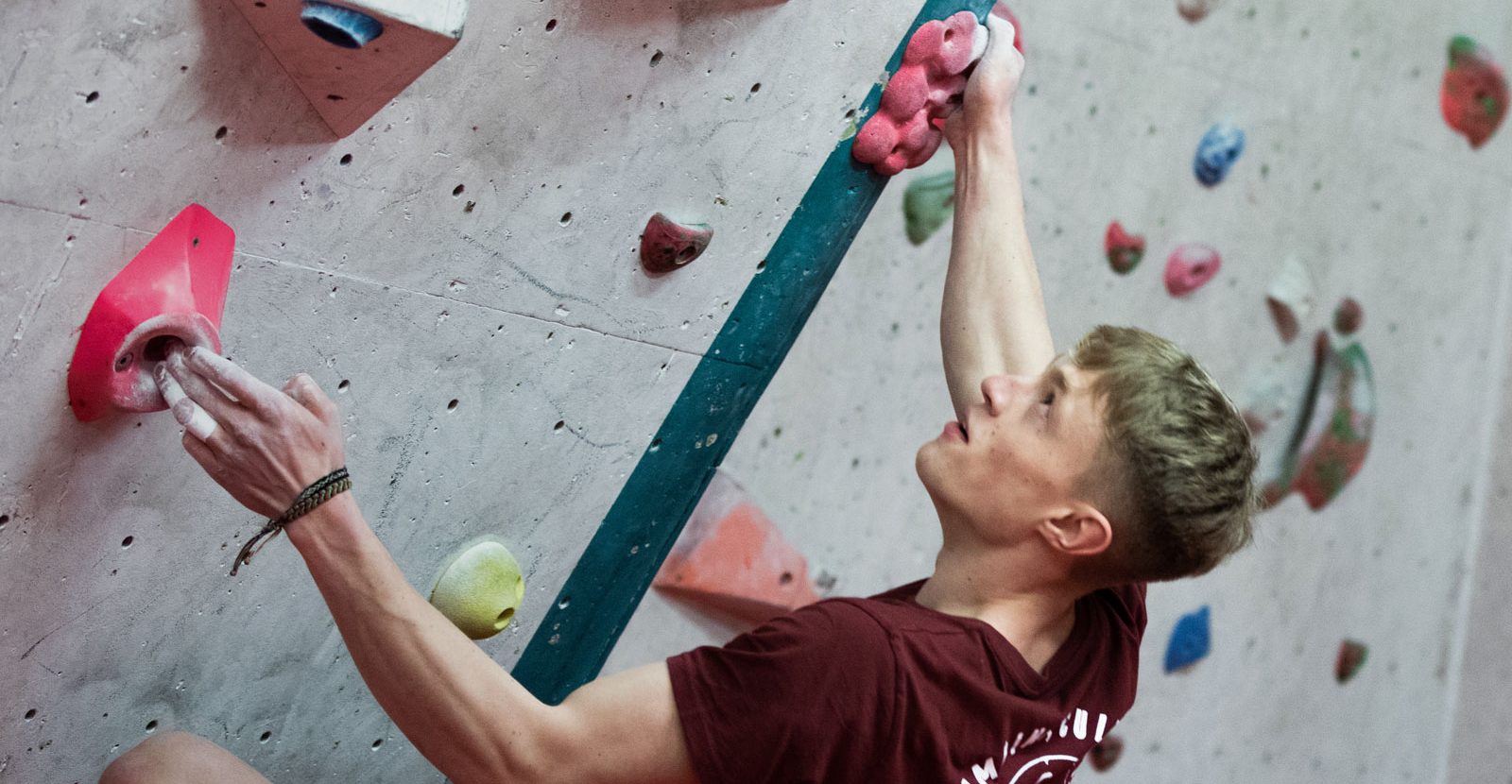As someone who spends pretty much all of their free time either climbing at the crag or training at the wall, the adjustment to a life staying confined to home is a big one, to say the least! At the same time, it is a manageable one.
Personally, the thing I enjoy about climbing most is the physical side. Pushing myself to my absolute physical limit, doing the hardest moves possible on the smallest holds possible. For this reason, the disciplines I enjoy the most, and find myself dedicating more time to, are sport climbing and bouldering. Obviously with crags off limits and no adequate spaces to do climbing specific movement training, that leaves the question of what do you do when you can’t climb, but still get better?
Climbing is unique to many other sports in that it is an even balance between strength, technique, and mental ability, and having less of one is a massive limiting factor to the others. So to get better at climbing, you need to address those three critical elements; leaving us with the question “how does one do this at home?”.
Mental ability. This is the most logical place to start, since the others derive directly from it. Mental ability isn’t just being fearless when committing to moves on a route, it’s about motivating yourself to give your maximum effort in a training session, on a route, or on a move. Knowing how to access your “red zone” is difficult in climbing but it’s a skill that allows fast progression in the sport, and allows you to unlock technique and strength with more ease. Whilst at home it’s difficult to motivate yourself to train, especially as a lot of home training is inherently boring, and it’s accessing this motivation, then maintaining the mindset throughout a training session and pushing yourself to the limit which will enable you to improve in an otherwise unmotivating time. I’ll add that the ability to try hard translates through sports- if you know how to push yourself to your maximum on a 5km run- you can do it on a 7a overhang!!
Technique. Technique is fundamental to climbing and involves allowing yourself to use your body in the most efficient way, both through selecting the correcting holds and using them in the most efficient way, though this is hard to train for at home. Luckily technique isn’t just learning how to read routes! It involves balance, coordination, and body positioning. You don’t have to be on the wall to use any of these!Example: Try marking out a one-metre square on your floor. Stand in the middle. Standing on your left leg only, touch all four corners with your right leg whilst standing still. Then do the same with the other leg. Now, try standing on one corner doing the same thing. Now do that again facing out from the centre of the square. Here’s another example: Mark a point on your floor (masking tape is good for this). Standing on your left leg, cross through with your right leg as far to the left as you can and make a mark where you reach. Do the same thing with the other leg in the other direction. Over time, you can monitor your improvements and see if your ability to balance and stand still gets better. These are simple exercises that can be done in the comfort of any room in your house, whilst cooking tea, doing your teeth, or watching TV! It’s also pretty easy to make your own!
Strength. Lets focus on the four strength aspects which are easiest to train at home. Core, Finger Strength, Power, and Fitness (Aerobic System). One of my weaknesses is my core, hence why during lockdown I’ve been doing core workouts four times a week (on the floor- no equipment needed). There are endless core workouts on YouTube (here’s a good one from lattice I’ve been doing and core is essential for climbing.
It increases your stability on all angles of terrain, and improves your ability to keep your feet on the rock/wall when on steep ground. It’s also something which a lot of us (including myself) neglect, so what better time to train it than when we have nothing else to do and can’t fill our time with climbing? Finger strength, is probably the most important example of tailored climbing strength, and when you have a fingerboard or decent door frame is also pretty easy to train. The ability to hold small holds is important to climbing and can be improved by “deadhanging”. Deadhanging involves, quite simply, hanging from a hold without moving. “Max hangs” and “Repeaters” are two methods of this you’ll hear mentioned a lot, both with their merits, and I recommend (if you’re new to the fingerboard) reading up about them here (https://www.beastmaker.co.uk/pages/training) before getting started. Power, again, is quite easy to train. Power is your ability to use energy fast- I.e. cranking through a big pull to reach the next hold where there are no suitable feet. All you need is a pull-up bar, or a low tree branch, to work on your bicep strength. Work on your “power endurance” by doing multiple structured sets of as many as possible, for example if you know you can do 10 pull-ups at a push, try doing 5 sets of 10 with adequate rest (3 minutes) between sets. If you want to train your raw maximum power, stick your harness on, get yourself a bag for life, attach it to your harness and fill it with bottles of water until you find the maximum weight you can still complete three or so pull-ups. These are two exercises which target different aspects of your climbing, and they’re easy to do! Finally, it’s amazing what wonders a bit of fitness can do for your climbing. I’ve been enjoying getting into my running! It works your aerobic system which is particularly relevant to the endurance side of climbing, and for me at least, the nature of setting goals to improve your time bit by bit gives the same kind of satisfaction as pushing for harder and harder routes- keeping that try hard mentality in the sporting aspect of my life!
Lockdown life can be fun, and to summarise, more than anything, it’s a chance to work on the weaknesses we often neglect when we have the opportunity to climb outdoors and at the wall! Hopefully we’ll be allowed out to the crags again soon, where we can put on our shoes and test out all our new lockdown strengths!

“Trying hard on a ‘project’ out of my league, because you need a goal to train for right? Pre-crux on Bat Route (8c) at Malham Cove, nicely captured by Marsha Balaeva”
Blog by Max Rose, MCC Route Setter & Coach
